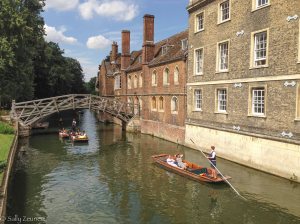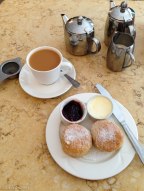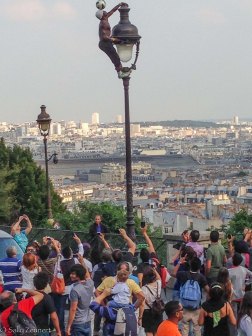Whilst on my recent trip to the UK, I spent a couple of days in Cambridge watching my sister-in-law perform in the annual Cambridge Shakespeare Festival.
Cambridge is a beautiful town, and is easily accessible from either London Liverpool St or Waterloo stations, with the journey only taking around an hour and one-way fares as cheap as £6. So a day trip is possible, but in order to gain a true appreciation of the the sights, I’d recommend at least an overnight stay.
Cambridge is of course renowned for its colleges, with an estimated student population of around 30,000. This is one of the reasons you will see so many bikes in and around town, with at least 50% of residents using a bike at least once a week.
*
During much of the year, the colleges are open for visitors to explore, with entry fees ranging from £2.50 to about £5. But unfortunately for me, several of the major ones were closed during my visit. Nevertheless, it is still possible to enjoy the architecture and general surrounds from street level.
*
Cambridge has been home to many famous past students, and is rich is interesting history:
- Trinity College is one of the largest and most sought-after colleges. It was established in 1546 by Henry VIII, whose statue looks down on to the street below from the top of the great gateway. But rather than his figure holding the royal sceptre in his right hand, these days he holds a chair leg – the result of a student prank!
- Stephen Hawking was a fellow at Gonville and Caius college until 2009, while Francis Crick, who co-dicovered DNA, was a former student here.
- Charles Darwin studied at the 500 year old Christ’s College.
- Sir Christopher Wren left his mark on several of Cambridge’s colleges, designing the chapel in Emmanuel college, and the Wren Library in Trinity college, home to 55,000 books and over 2,500 manuscripts.
- St John’s college spans both sides of the river, connected by the Bridge of Sighs, which does not resemble its namesake in Venice aside from the fact both are covered bridges.
-
The Mathematical Bridge is subject to the popular tale that it was designed by Sir Issac Newton, and constructed without nuts and bolts. One night, students disassembled it, only to find they were unable to put it back together! Sadly, this urban myth is untrue, especially since Sir Isaac died 22 years before the bridge was built!
- Punts were originally built as cargo boats or platforms for fowling and angling, but in modern times their use is almost exclusively confined to pleasure trips. Punting was introduced in Cambridge around 1902-1904, and the River Cam is now the busiest river for punting in England. You can take a 40 minute trip for around £12, or hire a punt from Trinity College to try it for yourself – if you’re game!
*
Cambridge is a lovely town to just wander and explore, and appreciate the historic buildings and beautiful architecture.
But there are a few must-sees/do’s whilst here.
Walk along The Backs
“The Backs” is the area along the River Cam that stretches from Magdalene St to Silver St, to the east of Queen’s Rd. As its name suggests, it passes the backs of a number of the famous colleges – so a great way to check them out for free! Stroll along the river, cross the small footbridges, or sit in the shade along the way and just soak up the ambience.
*
Spend a few lazy hours at the Botanic Gardens
This beautiful space is a lovely area to wander for a couple of hours. There are also numerous grassy spots to sit and picnic, or lie back and read a book.
*
Enjoy a cream tea
The cream tea is a quintessential English experience, and Cambridge has many options to choose from to get your scone fix! I selected a lovely tearoom called Harriet’s Cafe TeaRooms, situated at 16-17 Green St, where they call you “Madam” or “Sir”, and uphold good old-fashioned service.
Get a dose of history at the Fitzwilliam Museum
The Fitzwilliam Museum is housed in a lovely historic building about 500m out of the city centre. Its collection includes ancient artefacts; European and Oriental sculpture and decorative arts; artwork from the 13th century to the present day; and manuscripts and printed books. It’s open daily, aside from Mondays, and admission to the collections is free.
*
So Cambridge has much to offer its visitors, and is a lovely spot to spend a couple of days whilst in the UK.































































